Les Cévennes
My choice of holiday destinations in recent years has rarely inspired much envy, nor even much recognition. But, when you live in Nice, you have to be creative. As the northern French descent en masse for their dose of sunshine and sparkling blue water, it’s time for us to seek out somewhere more isolated. I had anticipated this as long ago as February, when early one morning I was suddenly seized with the need to plan our summer escape. We had narrowed it down to either Finland or a little-known French mountain range known as the Cévennes when we came across this website. Staying in a chambre d’hôtes with breakfast and dinner included would be a new way for us to spend a summer holiday, but the more I thought about it the more I liked the idea of leaving the cooking to someone else – especially when that someone seemed to love food as much as I do.
The hour-and-a-half drive from Arles to Le Ranc des Avelacs took us through the flat land of the Camargues to the wild slopes of the Cévennes, where only the occasional stone house peeping out through the trees reminded us that some intrepid people have settled here. At the little town of St-Etienne Vallée Française we took a right on a narrow bridge with no guardrail and the road narrowed to one car-width as we zig-zagged up the mountain. The higher we climbed, the bumpier and more precarious the road became, finally turning into a well-worn dirt track. Some careful manoevering led us to a parking lot with a perilous drop off the edge: we had arrived. Bearded owner Luc greeted us. “Bonne route?” We nodded, too stunned to disagree with him.
Having survived this initiation rite, it took us little time to settle into life at Le Ranc. A former magnanerie, where silk was produced, the gîte is a collection of buildings on different levels made of haphazard-looking stacks of slate. Our room had a simple, rustic charm with its heavy beams and wood floor, and a few steps away was a swimming pool drawing on water from a nearby spring. But the real joy of Le Ranc – besides the food, which I’ll get to in a minute – is the hiking trails that surround it, many of which lead to bathing spots in the river. With little food shopping and no cooking to worry about, we could spend our days walking, picnicking and swimming before returning to the gîte for the apéritif and Dominique’s splendid cooking.
Staying in a gîte is a great way to get to know people quickly: as one Parisian who had been coming to Le Ranc for several years put it, “it’s a bit like a commune but without the disadvantages.” Instead of the scarily-equipped hikers I had imagined, we met a group of laid-back Parisians and southerners, Belgians and Brits, all with a penchant for wholemeal bread, herbal tea and Dominique’s jams (oh, Dominique’s jams!). Dinner conversation was never boring, and often ended philosophically on subjects such as “does time really speed up as you get older?” Sam showed little interest in this one as he had finally met his match in four-year-old Parisian Ambre, who did her best all week to out-run and out-joke him. Both were tireless on the hiking trails, even if they sometimes argued like an old married couple.
So, I know you are wondering, what about the food? Belgian-born Dominique has only one flaw as a cook: she is far too modest. Each morning she disappeared into her kitchen and each night she joined us for the apéritif, smiling and apron-free. The genius of her cooking is that it requires no last-minute fiddling, allowing her to enjoy the day’s most sociable moment. She humbly describes it as home cooking, but I’ve rarely eaten as well in a restaurant. What makes the difference is the quality of her ingredients – chestnut honey from a nearby farm, untreated vegetables from her own garden or a neighbor’s, organic pelardon goat’s cheese from the market in St-Jean du Gard – and her attention to presentation. Most meals started with a big salad of freshly picked vegetables and herbs, which was often followed by a long-simmered dish served in a Moroccan tagine: perhaps a gigot de l’extrême, lamb cooked all day in layers and layers of foil; Belgian carbonnade, beef stewed in Chimay Bleue beer; or vegetarian ratatouille. No matter how far we had walked, Sam always stayed up for Dominique’s desserts – anything from a fruit salad of local melons with fresh verbena to tiramisu in which chestnut liqueur stood in for marsala.
When I asked Luc and Dominique to describe the cooking of the Cévennes, Luc said, “the Cévennes doesn’t really have dishes, it has products.” I found these at the Saturday producer’s market in St-Jean du Gard, which was much smaller than the Tuesday market but also more authentic, and at Terroirs Cévennols between St-Jean du Gard and Anduze, a shop where I could happily while away hours and hours. We came back loaded down with sweet Cévennol onions, lively olive oil made from green picholine olives, tomatoes, peppers and basil to rival anything at the market in Nice, spice bread, chestnut flour and pelardon cheese, which became something of an addiction for me that week. We ate it every day for lunch with bread and tomatoes, and each time I felt we were having the perfect picnic. But perhaps my most prized ingredient from the Cévennes is deep amber chestnut honey from a neighbor of Dominique’s, who is a schoolteacher during the year and a beekeper in the summer; several guests at the gîte ordered a few jars, which he brought over on a donkey using one of the many mountain trails designed for these much-loved beasts.
You’ll be seeing one or two of Dominique’s dishes on this blog in the near future, but in the meantime here is a quick apple cake that I made for some unexpected guests using the chestnut flour I had brought back. This gluten-free flour, which is also found in Corsica, has a strong, nutty flavor and natural sweetness. It’s usually mixed with wheat flour to add some lightness, as in this recipe which came with the bag of flour I bought at the St-Jean du Gard producers’ market.
Apple cake with chestnut flour
Serves 6
3 heaped tbsp chestnut flour
3 heaped tbsp white flour
6 tbsp sugar (I used light brown cane sugar)
2 tsp baking powder
A pinch of salt
1 large egg or 2 small eggs
1 tsp vanilla extract
6 tbsp milk
2 apples (I used reine des reinettes)
For the topping:
100 g butter (4 oz)
2 tbsp sugar
1 egg
Butter a 9-inch cake pan. Mix together all the dry ingredients. Add the egg, then the vanilla and milk a little at a time, stirring to obtain a smooth batter. Pour this into the cake pan. Peel the apples, cut into thin slices and arrange these over the batter.
For the topping, melt the butter. Beat together the egg and sugar, then add the warm butter a little at a time. The mixture should thicken a little and become smooth. Pour this over the apples.
Bake in a 350 F oven for about 25-30 mins, until browned.

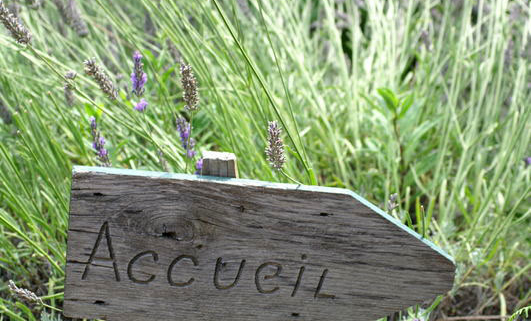
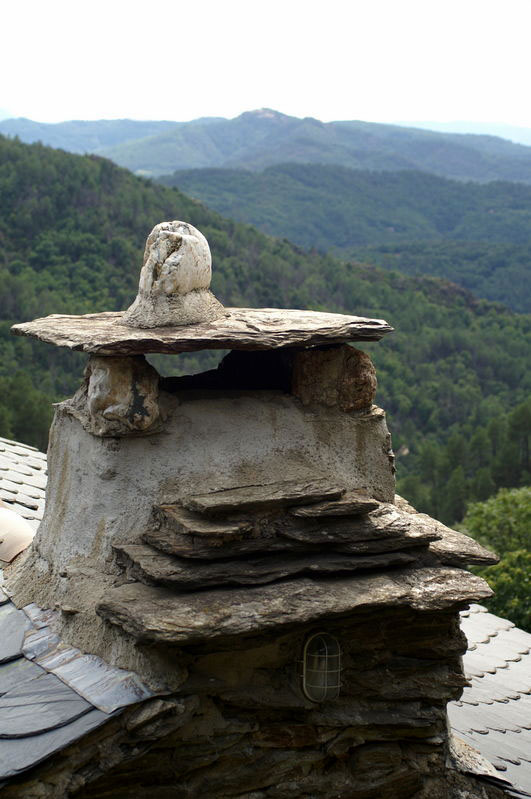
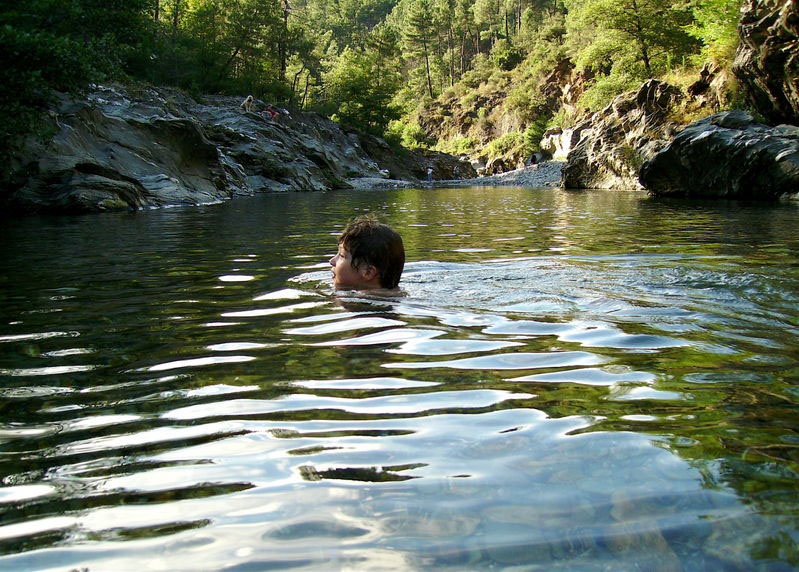
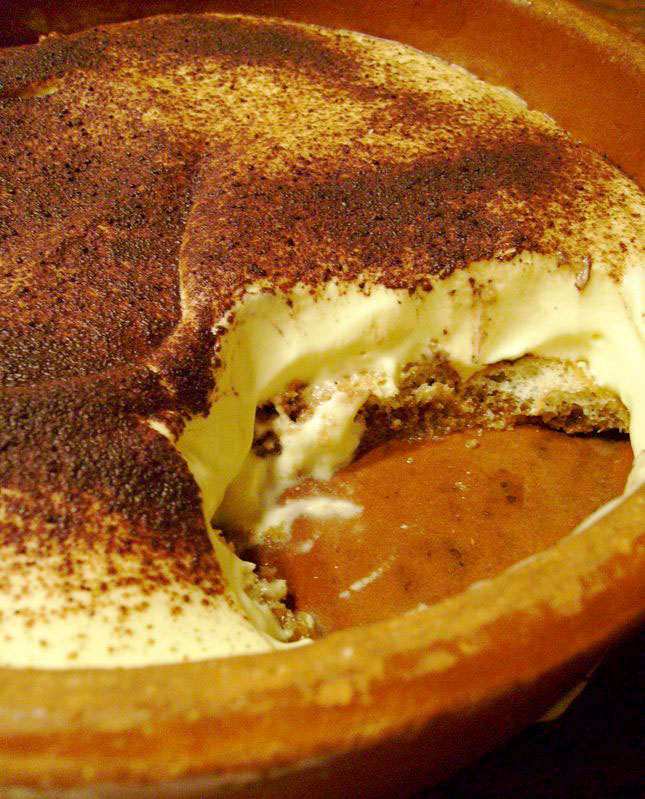
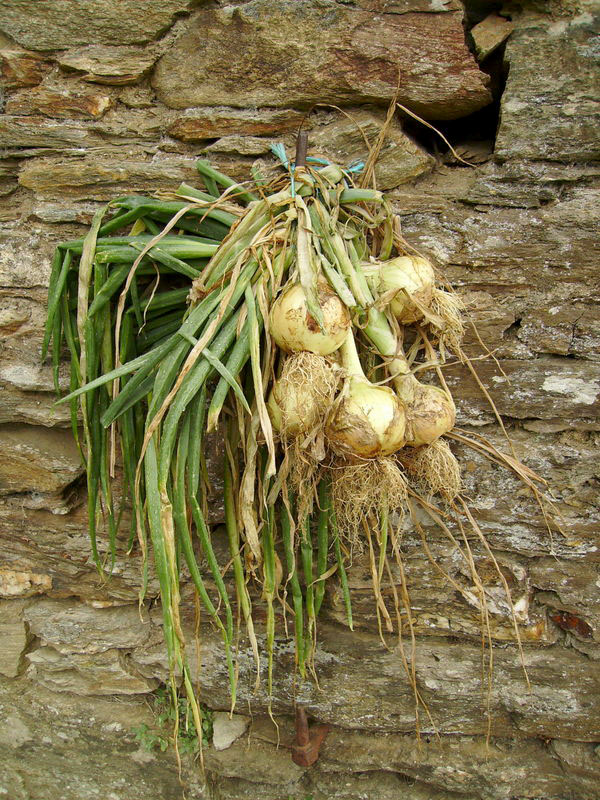
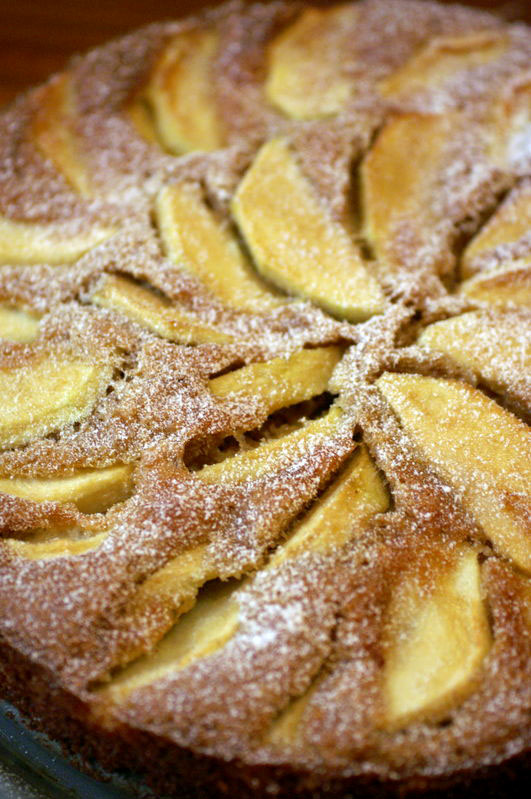


Je voudrais parcourir les Cevennes au mois de mai avec un groupe d’adolescents americains. Ce serait dans un cadre culturel et culinaire si possible. Je recherche un itineraire d’une semaine. Merci
Daniele
Susan, indeed it does! It must have something to do with being busier, and liking what we do so that we don’t notice the time go by. Oh, how you would love Picholine oil! I’m thinking of going back just for more of it…
Time does speed up as you get older. I’m so glad you shared your rustic soujourn with us, Rosa, in a place where time stands still even if only a little while during holiday.
Picholine olive oil sounds fantastic.
Jim, great to hear from you. I do hope you make it to Nice again before long!
Nora, when a g√Æte serves both breakfast and dinner it’s called demi-pension in French. They do have a separate house that’s available for rent with its own kitchen, but I think it would be a great shame to miss out on Dominique’s cooking! Hope you enjoy the cake – for me it really tastes of the C√©vennes.
Rosa,
This place you stayed at sounds just lovely. I’m assuming it’s a bed & breakast, or in this case, dinner as well. Too bad I don’t understand French (their website). Being so close to nature (hiking) is fantastic.
I haven’t used chestnut flour in ages. I do love the taste it imparts in cakes.Thanks for this recipe.
Rosa,
This place you stayed at sounds just lovely. I’m assuming it’s a bead & breakast, or in this case, dinner as well. Too bad I don’t understand French (their website). Being so close to nature (hiking) is fantastic.
I haven’t used chestnut flour in ages. I do love the taste it imparts in cakes.Thanks for this recipe.
Rosa,
Reading your blog while passing a long day at the computer always improves my mood. Your entries are wonderful, as was the day Margaret and I spent with you and Philippe last December in your home. Who knows, we may return one day, perhaps gray and haggard, but at least we will still be hungry and thirsty.
A bientot!
Jim
Martha, what you’re doing sounds wonderful and Estonia is a place I’d love to visit. I’m sure you can accomplish great things!
Lucy, it all became a bit too much for me this summer, but I’m very happy to be back in the blogging world, and especially to hear from you! I think Le Ranc des Avelacs is exactly your kind of place.
Eileen, we were very lucky with our choice. But then, we’ve never really gone wrong when visiting obscure French regions!
Sounds like an absolutely lovely trip. And to have such wonderful food is perfect!
Rosa! I was wondering where you’d got to.
Was having trouble sleeping, so popped on over for a little bit of midnight reading. So pleased that I did. Dominique’s cooking is exactly what I needed to read – and that swimming hole! Beautiful words. Beautiful pictures. Such a beautiful place.
Nothing I love more than company that loves wholemeal bread, herbal tea and really exceptional homemade jams. Thank you.
What a wonderful place/ vacation/report….I live on an island off the coast of Estonia where I work with the local organic farmers group. We have opened a restaurant featuring local food products but are a long way from having anything like you describe here. I dream of one day having places like this on Saaremaa. I have recently bookmarked your blog because I love France and good food. Keep writing – please.